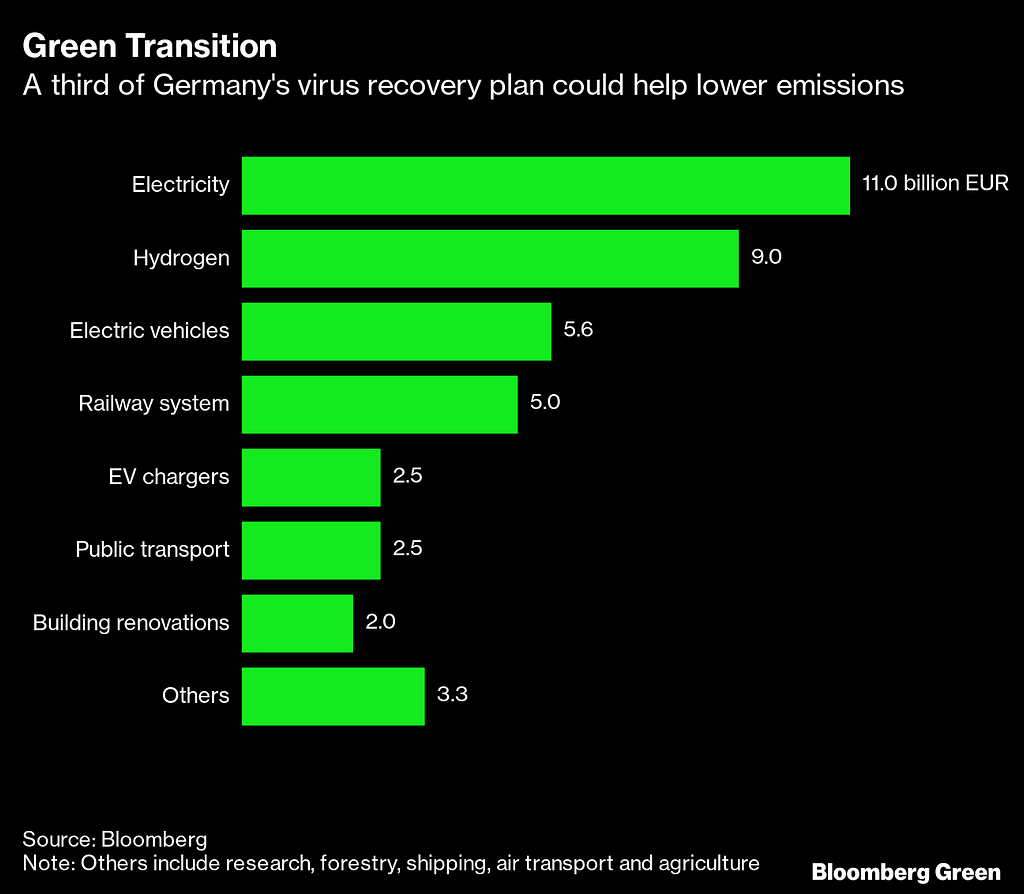These European countries are promising to “build back better” with substantial investments in a green recovery.
COVID-19 has brought radical changes to our society. Throughout 2020, many countries have faced lockdowns or similar restrictions to prevent the further spread of the virus. This momentous change in our lives has happened almost from one day to another, showing the world the importance of resilience and adaptability.
Governments are now required to allocate unprecedented resources to support the recovery of their economies. It is important though, that immediate economic aid does not continue to propel the systemic vulnerabilities that accentuated the pandemic’s catastrophic effects in the first place. To build back truly better, a systems approach is key.
As an encouraging first step, these European countries are promising substantial investment in green recovery measures to drive long-term resilience and sustainability.

The United Kingdom
The United Kingdom is gearing up to invest in a COVID-19 recovery focused on net-zero emissions. In its recently released Ten Point Plan for a Green Industrial Revolution, the government outlined its plans to mobilize £12billion in government investment, and potentially three times as much from the private sector, to create and support up to 250,000 green jobs.
In an article for the Financial Times, Prime Minister Boris Johnson introduced the plan saying: “Now is the time to plan for a green recovery with high-skilled jobs that give people the satisfaction of knowing they are helping to make the country cleaner, greener, and more beautiful.”
Activities to support these ambitions include: advancing offshore wind; driving growth of low-carbon hydrogen; delivering new and advanced nuclear power; accelerating the shift to zero-emission vehicles; green public transport, cycling and walking, and what the government is calling ‘Jet Zero’ initiatives to cut aviation emissions. And this is just the start. The plan also aims to drive greener buildings, investment in carbon capture, usage and storage, investment in green finance and innovation, and protection of the natural environment.
The final point is underpinned by Environment Secretary George Eustice’s July announcement of the development of a new Natural Capital and Ecosystem Assessment that will improve the nation’s baseline understanding of habitats and species abundance, and provide better guidance for decision-making.
The UK government is also investing beyond its own borders. The UK Pact Green Recovery Challenge Fund is making £12 million available to help partner countries accelerate their low-carbon transitions.
And as the government takes these actions, consensus among British citizens is growing too: over half of adults agree that the COVID-19 recovery must put the environment first. Furthermore, according to The Guardian, people would be prepared to continue many of the lifestyle changes enforced by the coronavirus lockdown to help tackle the climate emergency, such as greener travel options and working from home.

Germany
As Europe’s biggest economy, Germany plays a fundamental role in driving a green recovery in Europe, and the nation has big plans. German Environment Minister Svenja Schulze said:
“We must look beyond today’s problems and give thought to the time after the coronavirus as well. Future generations need to be able to live well too – in a country, and a Europe, that is fair and economically robust. That is why I am very pleased that the German government is using the state economic recovery support related to the coronavirus situation to accelerate the transition to a climate-neutral future.”
According to the World Economic Forum, Germany is allocating around $46 billion – of its $145 billion recovery budget – to sustainable development in areas such as renewable energy and electric vehicles. Choosing to invest in green mobility, over diesel- and petrol-powered cars, is Germany’s attempt to structurally change the automotive industry, a very lucrative market for the country.
In addition to its focus on mobility, the government is also planning large-scale investments to make Germany a global pioneer in green hydrogen, cited by the government as ‘the oil of tomorrow’. The national hydrogen strategy links climate, energy, industrial, and innovation policy to provide solutions for industry, transport, and heating – all in service of climate goals, most notably the country’s ambition to become carbon neutral by 2050.

France
The French government has decided to allocate about one-third of its €100 billion recovery package to green activities. According to the UN, sustainable investments are expected in the following sectors: buildings, industry, agriculture, and transport. A municipality-level example of the latter is the plan to transform Paris into a “15-minute city”, a city in which residents live no more than 15 minutes walking or cycling distance from their daily activities. Paris’ Mayor Anne Hidalgo aims to redesign Paris into a people-friendly city by removing space for cars and creating space for pedestrians and cyclists.
Euractiv describes the French plan as “massive”, of “historic magnitude” and as a “giant step for the environment”. The funding destined for the COVID-19 recovery plan is almost four times greater than that invested to recover from the 2008 financial crisis. Aiming to invest in what it calls the “sectors of the future”, France is also showing interest in cooperating with Germany, in its plan to develop the green hydrogen sector, showing how an ecological transition is taking place in the heart of Europe.
According to the Guardian, the French package’s main environmental measures are focused on transport, energy production, and energy-efficient renovation programmes for public buildings, offices, and homes. With this stance, France is aiming to increase competitiveness, boosting jobs, and greening the economy.

Nordic countries
In a joint declaration, Nordic country governments have highlighted the urgency of mobilizing an international green recovery in response to the COVID-19 crisis. Denmark, Finland, Iceland, Norway, and Sweden see this as a chance to solve the climate crisis and have set an action-oriented agenda for more resilient, healthy, equal, and inclusive societies.
The five Nordic countries’s green recovery plan will see great initiatives in sustainable solutions, circular economy, digitalization, and innovation – with particular focus on green transport, sustainable buildings, and the construction sector. These national investments in the green economy are a step forward to their 2019 decision to become the most sustainable and integrated region in the world by 2030.
Acknowledging the pandemic’s effects on people in extreme poverty in developing countries, the nations are taking action beyond their own borders as well, by establishing the Nordic Development Fund (NDF). This €350 million fund is devoted to investments in climate innovation and financing in developing countries, mainly focusing on African countries.
The Fund will support a climate change adaptation plan, investing in these countries’ economies to enhance resilience and create new jobs. For instance, NDF has mobilized financing in support of the restoration of the coast against erosion and flooding in West Benin, enhancing the protection of communities and infrastructure.
What next?
The COVID-19 crisis has shown us the fragility of our global economic system in dealing with unexpected shocks. Many organizations and nations are heeding the warning, acknowledging the need to boost their economies in tandem with long-term sustainable investment that increases structural resilience.
UK, Germany, France, and the Nordic region’s commitments to addressing the ongoing climate crisis, while recovering from the COVID-19 crisis, are important first signals of a worldwide shift towards a more sustainable economy. What remains to be seen is how these plans will translate into real impact. What specific steps will these countries take towards their stated investments and goals, and most importantly, how will they measure their progress against them? Will these leading examples prompt other governments to follow suit? As commitments build ahead of a much-anticipated COP26, we remain hopeful.




